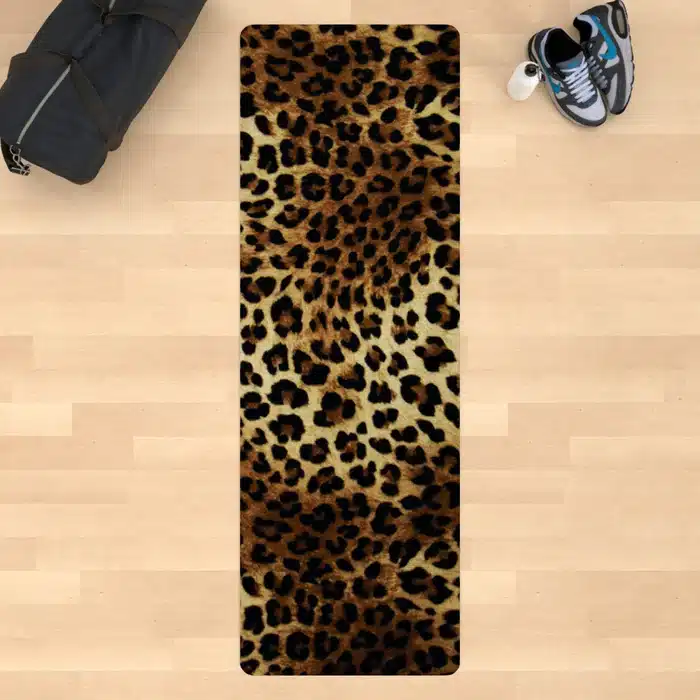Do Yoga Mats Float? Find Out If They’re Good for Pool Exercises!

Have you ever wondered if yoga mats are suitable for water exercises? Can they float on water or do they absorb water and sink? Here, we’ll explore the buoyancy, water resistance, and suitability of yoga mats for water-based workouts. Whether you’re an avid swimmer, a fan of aquatic yoga, or simply looking to switch up your workout routine, we’ve got you covered.
So, do yoga mats float? Let’s find out!
Yoga Mat Buoyancy and Floating Capabilities
Yoga mats have varying degrees of buoyancy, with some sinking to the bottom of the pool while others remain afloat on the water’s surface. The buoyancy of a yoga mat is influenced by several factors, including its weight, size, shape, thickness, and the type of foam used in its construction.
The foam density is a critical factor in determining a yoga mat’s floating capabilities. High-density foam mats tend to be heavier and less buoyant than low-density foam mats. Generally, lighter mats are more buoyant than heavier ones, and a thicker mat will displace more water, which increases its buoyancy.
Another factor that influences a yoga mat’s buoyancy is its surface texture. Smooth mats tend to be more slippery and can easily slide off the water’s surface, while mats with textured surfaces provide better grip and stay afloat more easily.
Overall, yoga mats can be suitable for water exercises if they have adequate buoyancy, which provides support and stability during aquatic workouts.
Buoyant Yoga Mats
If you’re looking for a yoga mat that floats, there are several options available on the market. Some popular choices include:
| Yoga Mat | Foam | Buoyancy |
|---|---|---|
| Aqua Base Yoga Mat | EVA Closed-Cell | Highly Buoyant |
| AquafitMat | EVA Closed-Cell | Buoyant |
| Glide Fit | PE Foam | Very Buoyant |
It’s essential to choose a yoga mat that suits your needs and preferences. Consider the type of exercises you’ll be doing, the conditions of the water, and your level of experience.
Overall, a buoyant yoga mat can enhance your water-based workout experience by providing added comfort, support, and stability.
Yoga Mats for Swimming and Water-Based Yoga
Swimming and water-based yoga are excellent forms of exercise that offer multiple benefits, from improving cardiovascular health to relieving stress. However, practicing yoga or swimming in a pool can present challenges in terms of safety and comfort. That’s where yoga mats come in handy. A good yoga mat can provide you with a stable surface to perform various poses and movements, ensuring a safe and comfortable experience.
Yoga Mats for Aquatic Workouts and Water Activities
Aquatic workouts, such as water aerobics, swimming, and water-based yoga, can all benefit from the use of a yoga mat. In addition to providing support and stability during exercises, yoga mats can also add an extra layer of comfort by cushioning joints from the impact of hard surfaces in water.
The adaptability of yoga mats to various water-based exercises makes them an essential piece of equipment for people looking to stay healthy while enjoying water activities. They are lightweight and easy to carry around, making them convenient.
Benefits of Using Yoga Mats in the Water
Yoga mats offer several benefits when used in water exercises. They provide a stable and comfortable surface for practicing yoga, pilates, or other workouts in the water. Here are some of the advantages of using yoga mats in the water:
- Improved balance and stability: The non-slip surface of yoga mats provides better traction, which can help improve balance and stability during water-based exercises.
- Reduced risk of injury: Yoga mats offer cushioning and support, which can reduce the impact on joints and prevent injuries while exercising in the water.
- Increased resistance: Water provides natural resistance, and yoga mats can amplify this effect by creating additional friction. This increases the difficulty of workouts and makes them more challenging.
- Enhanced performance: Yoga mats are designed to provide grip and support, which can help athletes perform better during water-based activities such as swimming, surfing, or paddleboarding.
- Improved hygiene: Yoga mats can prevent direct contact with water in public pools or other communal water bodies, reducing the risk of infection.
Overall, the use of yoga mats in water exercises can improve comfort, safety, and performance, making workouts more enjoyable and effective.
How to Choose the Right Yoga Mat for Water Exercises
Choosing the right yoga mat for water exercises can enhance your overall experience and performance. Here are some practical tips to help you make the right choice:
- Consider the size: Look for yoga mats that are compact and easy to carry around. Ensure they are not too bulky or heavy, as this can affect your mobility in the water.
- Choose the right thickness: Opt for yoga mats that are thicker than usual, as they provide better cushioning and support in aquatic environments.
- Look for texture: Textured yoga mats provide better grip and stability on wet surfaces. Look for mats with a non-slip surface to enhance your safety during water exercises.
- Additional features: Consider additional features that can improve your performance, such as handles for easy carrying and drying, or anchor points for attaching to pool decks.
- Choose water-friendly materials: Look for mats made from waterproof or water-resistant materials that can withstand exposure to water. This will ensure that your mat remains durable and in good condition over time.
By following these tips, you can find the best yoga mat for water exercises that suits your needs and preferences. With the right mat, you can enhance your yoga practice, improve your safety, and enjoy the benefits of water-based exercises.
Maintenance and Care of Yoga Mats Used in Water
Like any other fitness equipment, yoga mats used in water require proper maintenance and care to ensure their longevity and optimal performance. Here are some essential tips to help you keep your floating yoga mat in top condition:
- Clean your yoga mat regularly: Water-based exercise can expose your mat to dirt, sweat, and bacteria that can compromise its durability and hygiene. Therefore, it’s essential to clean it thoroughly after every use. Use a mild detergent and warm water to wipe down the mat, then rinse it with clean water and allow it to air dry completely before storing it.
- Avoid harsh chemicals: Strong detergents, bleach, and other abrasive cleaning agents can damage and weaken your yoga mat’s materials. Stick to gentle cleaners and organic solutions that won’t harm the mat.
- Store your mat properly: After cleaning, roll up your mat and store it in a dry, well-ventilated area away from direct sunlight. Avoid folding or creasing the mat for extended periods as this can cause permanent damage, particularly in the foam layer.
- Protect your mat from extreme temperatures: Extreme heat can melt the foam layer, while extreme cold can cause it to crack or become brittle. Avoid exposing your yoga mat to temperatures above 100°F or below 40°F.
- Use a mat carrier: A high-quality mat carrier can protect your yoga mat from moisture, dust, and other environmental factors that can affect its performance. It can also make transportation and storage easier and more convenient.
By following these simple guidelines, you can keep your floating yoga mat in excellent condition and enjoy its benefits for years to come.
FAQ – Frequently Asked Questions about Floating Yoga Mats
Here are some commonly asked questions about the floating capabilities of yoga mats and their suitability for water exercises.
Can yoga mats float?
Yes, some yoga mats can float depending on their buoyancy and the density of the foam used in their construction. Foam-based yoga mats tend to be more buoyant than rubber or PVC mats, thus making them better suited for water exercises.
What makes a yoga mat float?
A yoga mat’s ability to float depends on the materials used in its construction, particularly the type and density of foam. The more buoyant the foam, the better the mat’s floating capabilities. Additionally, yoga mats with closed-cell construction tend to be more water-resistant and therefore float more easily than those with open-cell construction.
Can I use any yoga mat for water exercises?
It’s best to choose a yoga mat that is specifically designed for use in water, as they are typically made with water-resistant materials and have better buoyancy. Using a non-water-resistant mat may cause it to absorb water and become heavy, making it difficult to use for water exercises.
Can I use a yoga mat for swimming or water yoga?
Yes, yoga mats can be used for swimming and water yoga. Water yoga mats are specifically designed for use in water and are made with materials that can resist water absorption, increase buoyancy, and provide better grip and traction in wet environments. Swimming with a yoga mat can be helpful for adding resistance and providing a more stable surface when exercising in the water.
What should I look for when choosing a yoga mat for water exercises?
When selecting a yoga mat for water exercises, look for one that is water-resistant or waterproof, has good buoyancy, and is lightweight and easy to transport. It should also provide good traction in wet environments, be durable enough to withstand exposure to chlorine and other chemicals, and be easy to clean and maintain.
How should I care for my yoga mat used in water?
To care for your yoga mat used in water, clean it with a mild soap solution and rinse thoroughly with clean water after each use. Allow it to air-dry completely before storing it in a dry and well-ventilated area to prevent mold and mildew growth. Avoid exposing it to direct sunlight and harsh chemicals, which can damage the mat’s surface.
By following these care instructions, you can ensure that your yoga mat stays in good condition and performs well during water exercises.





